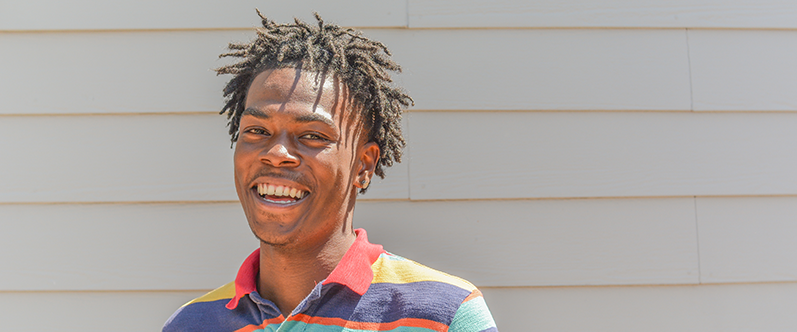In our bold mission to end homelessness in Austin, we know our efforts must involve two things: we must do it together with community partners, and we have to provide personalized support for each unique person we serve. We are excited to announce our new rapid re-housing youth program, which launched this fall in collaboration with SAFE and LifeWorks. The program will focus on providing a stable home for youth currently or at risk of experiencing homelessness. We sat down to talk with Caritas of Austin’s Jason Phillips to get more details about the program.
How did a program focused specifically on housing youth experiencing homelessness come to be?
In the fall of 2016, Austin was one of 11 communities who participated in the 100 Day Youth Challenge – an initiative to house dozens of young people across the country using innovative and collaborative strategies. Caritas was highly involved in this challenge, housing more than half of the youth housed overall during the Austin initiative. The challenge was made possible by the Department of Housing and Urban Development (HUD), community stakeholders, and private funds.
When you say “youth,” what exactly do you mean?
Caritas of Austin’s new program will serve young people ages 18-24. Many of the youth who will be served have been involved in the foster care and the criminal justice system. The hope is that we can intervene in a way that not only provides a stable home in the community, but builds a strong foundation in their lives in order to help them reach their full potential in the long run.
What will the collaboration across agencies look like?
The collaboration of SAFE, Caritas of Austin, and LifeWorks is a natural one, and we all bring an aspect of expertise. LifeWorks is the subject matter expert on youth experiencing homelessness, SAFE is the community’s primary support for family violence and child abuse, and Caritas of Austin is an expert in rapid re-housing interventions. Our teams will meet weekly to discuss the youth being served and ensure there are high quality services across all agencies.
How big is the youth homelessness issue in Austin?
As of March 2018, there were just over 250 youth who had completed a Coordinated Assessment and identified as experiencing homelessness. There are youth experiencing homelessness in our community that may have not completed this assessment, thus, we expect the population is larger.
What’s unique about serving young people, and how will Caritas of Austin need to adapt its services?
Many of the young people we will serve have never had housing on their own. Their community and support system often look different than what we often consider as “family”. There is a lot more work on the life skills front – things like opening a bank account and being a tenant are new for them. And while young people often don’t have as many barriers to housing and employment, the real work is in helping them maintain these things. We will adapt our case management practices to be more present in the participant’s community and meeting them where they are, literally.
What did your team learn during the 100-Day Challenge that will drive your work with this program?
We learned a lot about shared housing and alternative housing. Most young people ages 18-24 are in an environment where they have roommates. When we are housing adults, we’re often not involved in roommate matching, but that’s a critical part of setting youth up for housing success. We’re looking into other systems who use matching tools like colleges and online platforms in order to learn how we can do this well.
What services will you provide to youth with this program?
Caritas of Austin will be focused on rapid re-housing, which means identifying permanent housing and providing ongoing support services to address other areas of wellbeing like employment, mental health, life skills, education, and social support. The housing community worked hard to structure this program to be “rapid re-housing plus,” which means we can provide services for up to three years and in a way that’s flexible to best serve this unique population.
What makes you most excited about this new youth program?
The fact that we are able to intervene with youth sooner in their lives is really exciting. The less time people spend in homelessness and experiencing the trauma that comes with it, the better their outcomes will be later in life. With the way this program is designed, we have the opportunity to be more creative in our services based on what is best for youth. There’s a lot we don’t know with this population, and I think it will be a really neat learning opportunity. The strengths of young people are different than older adults, so we need to capitalize on those strengths. We are also working closely with youth that have experienced homelessness to help implement programmatic policies and practices.
How can the community support this new initiative?
Donate! While the core of this program is supported through HUD, we have many additional needs that will only be made possible by generous Austinites who want to see youth succeed. In addition to monetary donations, the donation of Welcome Home baskets is also big. We don’t want youth to move into an empty apartment; we want it to feel like home as much as possible.
To support programs like the youth initiative, donate here.



